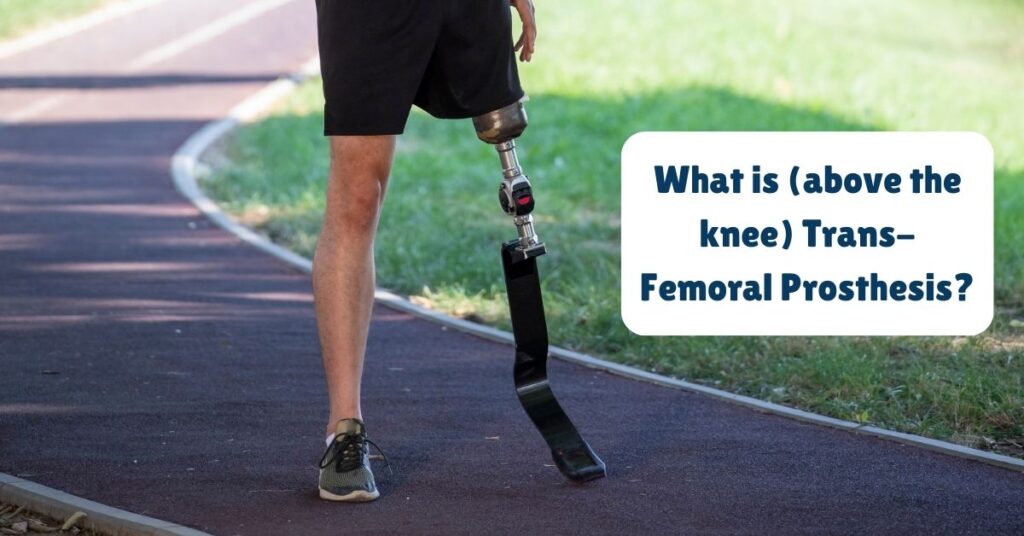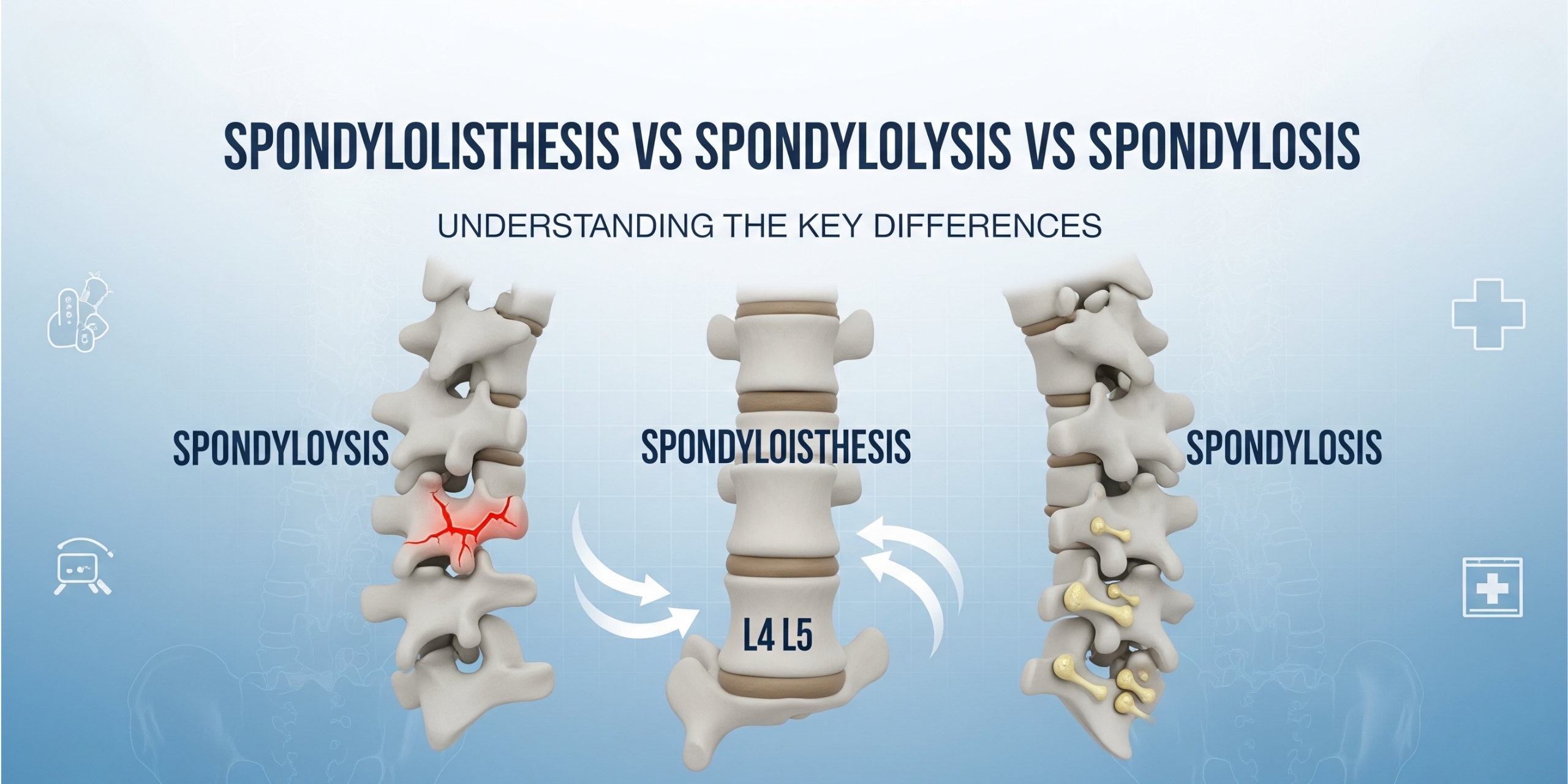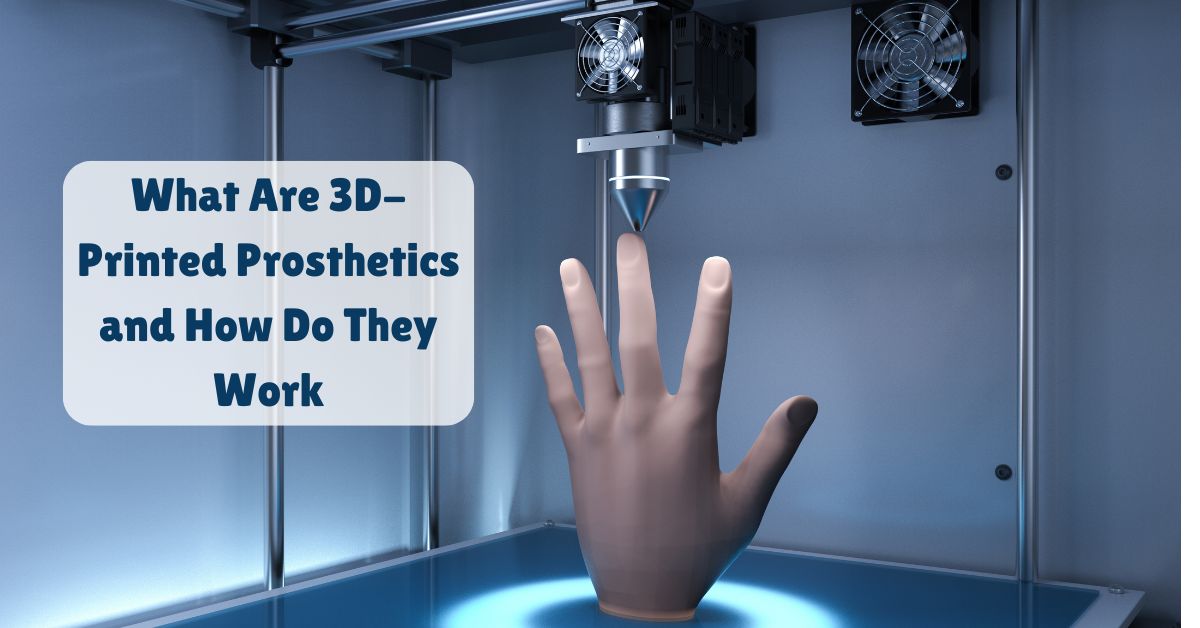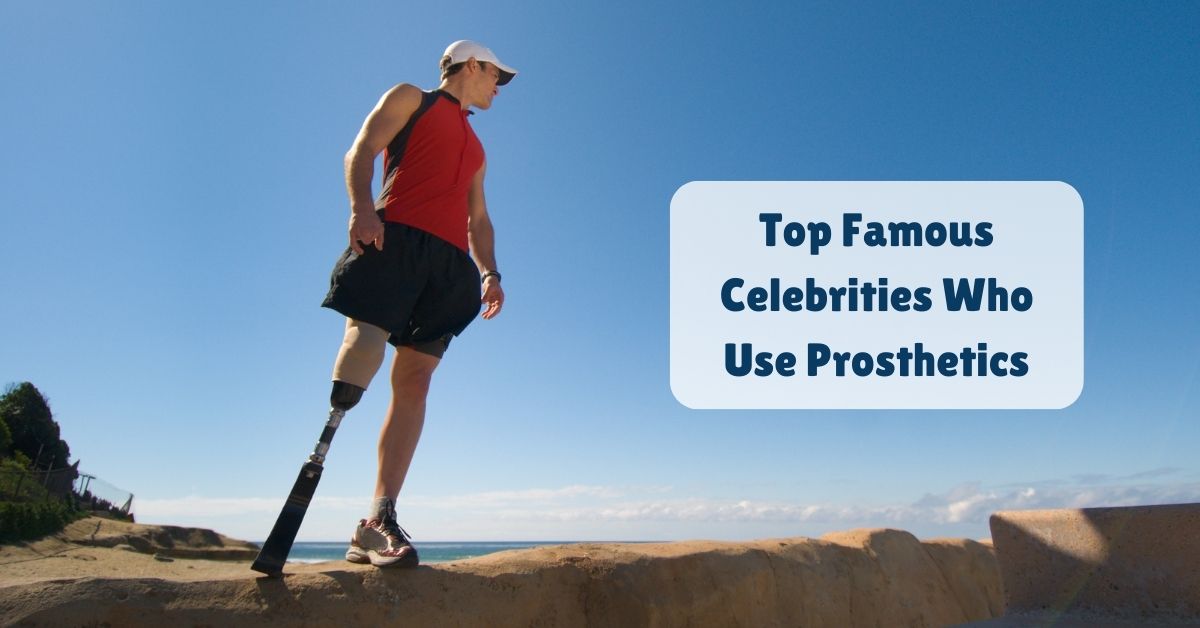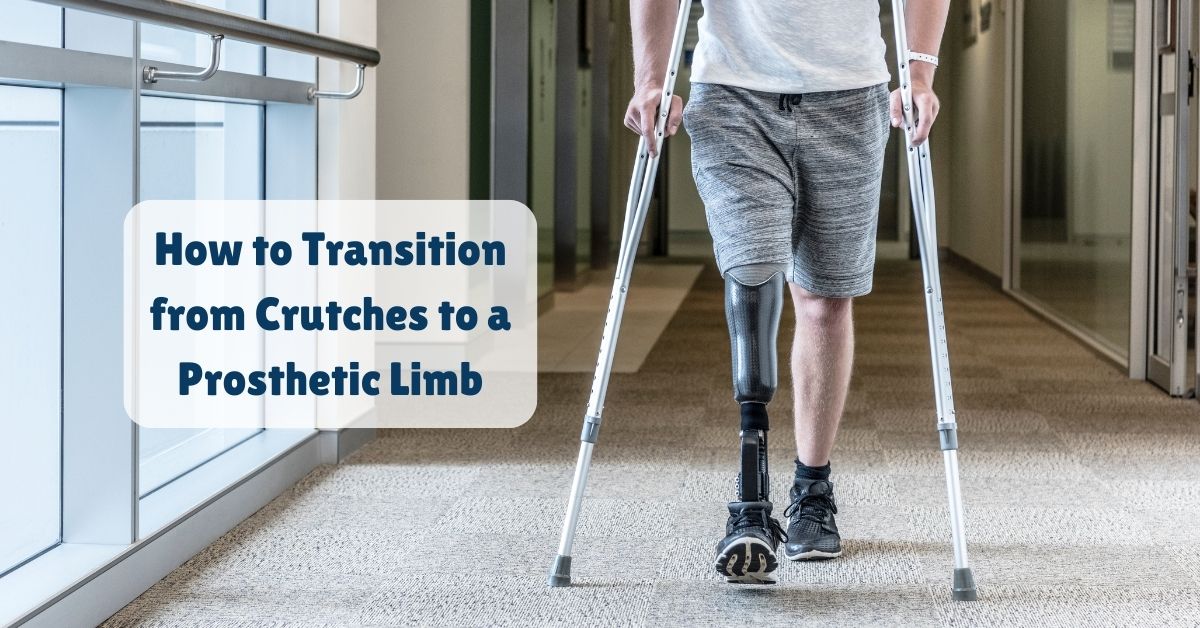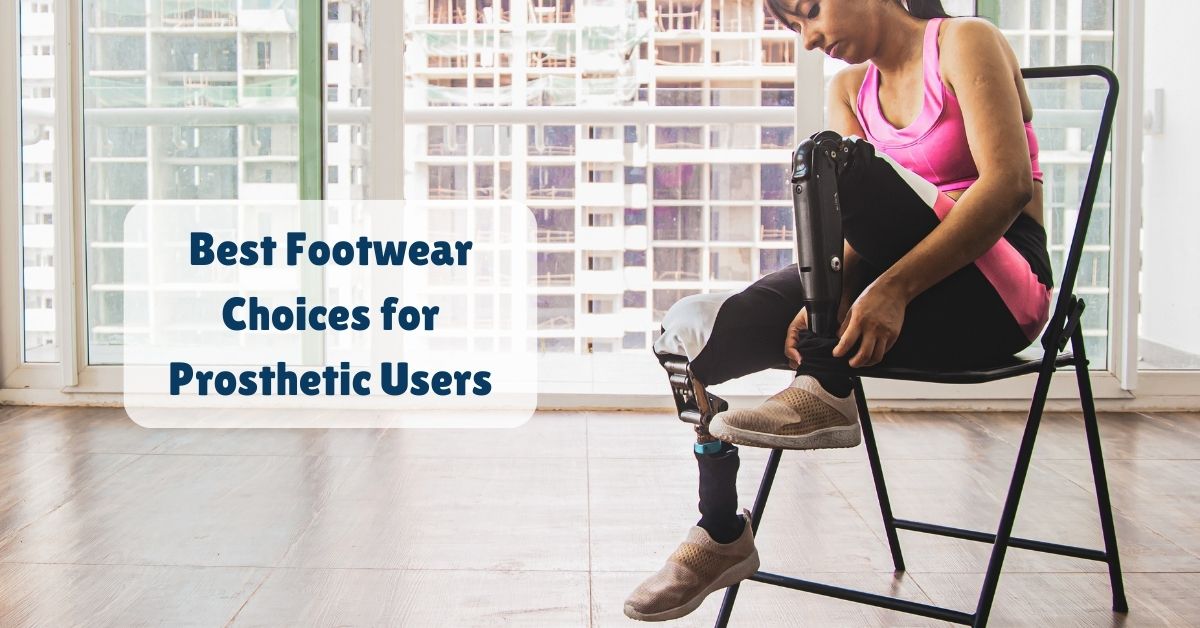A trans-femoral prosthesis is an advanced artificial limb designed for individuals who have undergone an amputation above the knee. This prosthesis replaces the missing limb, extending from the thigh to the foot, and is crafted from durable materials like polypropylene. It comprises several interconnected components, including a solid ankle cushion, knee shell, and various adjustment mechanisms, which work together to replicate the function and movement of a natural leg. The trans-femoral prosthesis provides support, mobility, and comfort, allowing users to perform daily activities and maintain an active lifestyle. It is tailored to fit the unique needs of each individual for optimal functionality and comfort.
What Is A Trans-Femoral Prosthesis?
A transfemoral prosthesis is an advanced artificial limb designed for individuals who have undergone an amputation above the knee. This prosthesis replaces the missing limb from the thigh to the foot, crafted from durable materials like polypropylene.
It includes components such as a solid ankle cushion, knee shell, and various adjustment mechanisms, which work together to replicate the natural leg’s function and movement.
A transfemoral prosthesis provides essential support, mobility, and comfort, enabling users to perform daily activities and maintain an active lifestyle. It is tailored to fit each individual’s unique needs, ensuring optimal functionality and comfort.
What Are The Types Of Trans-Femoral Prosthesis?
1. Mechanical Knee Prostheses
Single-Axis Knees: Featuring a simple hinge design, single-axis knees allow basic bending motion. They are typically more affordable and suitable for users with lower activity levels. However, they lack advanced stability features, making them less ideal for complex activities.
Polycentric Knees: These prostheses have multiple axes of rotation, providing a more natural knee movement and increased stability. The design enhances knee stability during the stance phase of walking, making them suitable for users who need better balance and more natural gait patterns.
2. Hydraulic Knee Prostheses
Hydraulic Swing Phase Control: This type uses fluid dynamics to control the knee’s movement during the swing phase of walking, offering smoother and more controlled motion. It adjusts to different walking speeds, providing versatility and improving the user’s confidence and safety during ambulation.
Hydraulic Stance Phase Control: These prostheses provide enhanced stability when the foot is on the ground by controlling the knee’s resistance during the stance phase. This feature is particularly beneficial for users who need extra support and stability while standing or during weight-bearing activities.
3. Pneumatic Knee Prostheses
Utilizes air pressure to manage knee movements, these prostheses offer a smoother and more natural gait. The pneumatic systems adjust to the user’s walking speed and provide variable resistance, enhancing comfort and efficiency during ambulation. They are lighter than hydraulic systems, making them easier to use.
4. Microprocessor-Controlled Knees
C-Leg: Equipped with sensors and a microprocessor, the C-Leg continuously adjusts knee resistance in real-time. This advanced technology provides a natural walking experience, reducing the risk of falls and adapting to various terrains, improving the user’s mobility and independence.
Rheo Knee: This prosthesis uses magnetorheological fluid that responds to magnetic fields to adjust knee stiffness. It adapts to the user’s walking speed and terrain changes, offering a more dynamic and responsive gait, enhancing overall comfort and stability.
5. Powered Knee Prostheses
Incorporates motors to actively assist with knee movements, powered knee prostheses provide additional support and mobility. They can mimic natural muscle movements, making activities like walking up stairs or slopes easier and more efficient, greatly improving the user’s quality of life.
6. Activity-Specific Prostheses
Sports Prostheses: Designed for specific activities, such as running, swimming, or cycling, these prostheses are tailored to the unique demands of each sport. They offer specialized features, such as shock absorption or enhanced flexibility, to optimize performance and safety during high-impact activities.
Waterproof Prostheses: Suitable for use in wet environments, these prostheses are made from materials that resist water damage. They are ideal for aquatic activities or situations where the prosthesis may be exposed to moisture, ensuring durability and functionality in various conditions.
What are The Key Components Of A Trans-Femoral Prosthesis?
A trans-femoral prosthesis consists of several key components designed to work together to replicate the function and movement of a natural leg. Here are the essential parts:
1. Socket
The socket is the critical interface between the residual limb and the prosthesis. It is custom-molded to fit the unique shape of the user’s limb, providing a secure and comfortable connection. Various socket designs, such as quadrilateral or ischial containment, cater to different anatomical needs and preferences.
2. Knee Joint
The knee joint replicates the natural knee’s bending and flexing functions. It can be mechanical for basic movement, hydraulic for smoother adjustments, pneumatic for variable resistance, or microprocessor-controlled for advanced real-time adaptability. The choice of knee joint affects the prosthesis’s overall functionality and suitability for different activities.
3. Shank
The shank is the portion of the prosthesis extending from the knee to the foot. It provides structural support and helps align the prosthesis with the user’s body. The shank transfers weight and movement forces from the knee joint to the foot, contributing to the overall balance and stability.
4. Foot/Ankle Mechanism
This component interacts with the ground and includes various designs like solid ankle cushions or dynamic response feet. It absorbs impact and mimics natural foot movement, enhancing stability and comfort during walking. The choice of foot/ankle mechanism affects how well the prosthesis performs in different activities.
5. Suspension System
The suspension system keeps the prosthesis securely attached to the residual limb. It includes options such as liners, suction systems, or harnesses. Proper suspension is crucial for comfort and function, preventing the prosthesis from shifting and ensuring it remains firmly in place during movement.
6. Liner
Worn between the residual limb and the socket, the liner adds cushioning and reduces friction. It enhances comfort by providing a soft interface and helps manage perspiration. The liner also aids in achieving a secure fit, reducing the risk of pressure sores and improving overall prosthesis performance.
7. Knee Shell
The knee shell encases the knee joint mechanism, offering both protection and support. It safeguards the internal components from damage and contributes to the prosthesis’s aesthetic appearance. The knee shell is designed to accommodate natural knee movement and improve the overall stability of the prosthesis.
8. Control Mechanisms
These mechanisms manage knee movements and adapt to varying conditions. Hydraulic systems adjust resistance fluidly, pneumatic controls use air pressure for movement, and microprocessors provide real-time adjustments based on sensor data. These technologies enhance the prosthesis’s responsiveness and functionality for different activities and terrains.
9. Foot/Ankle Cushion
The foot/ankle cushion, such as a solid ankle cushion heel, helps absorb shock and supports natural gait patterns. It is designed to minimize impact during walking and provide a stable base. This component enhances the comfort and efficiency of the prosthesis, making movement smoother and more natural.
10. Adjustable Components
Adjustable components like alignment bolts, adjustment pins, and washers allow for fine-tuning of the prosthesis. These parts enable customization of fit and function, ensuring that the prosthesis meets the user’s specific anatomical and functional requirements. Proper adjustment is crucial for maximizing comfort and performance.
What Are The Components Used in Trans-Femoral Prosthesis?
A trans-femoral prosthesis is a specialized artificial limb designed to replace an amputated leg above the knee. Constructed from durable polypropylene, this prosthesis is composed of several key components that work together to create the complete device. According to the International Committee of the Red Cross, a trans-femoral prosthesis includes the following nine essential parts:
1. Solid Ankle Cushion Heel:
This component offers essential cushioning and support at the base of the prosthesis. It absorbs shock and reduces impact, enhancing comfort and stability while walking. Its design ensures a natural heel strike, mimicking the function of a real ankle.
2. Hexagonal-Head Bolt and Lock Washer:
These fasteners are crucial for assembling and securing the prosthesis components. The hexagonal-head bolt allows for easy tightening and adjustments, while the lock washer prevents loosening due to movement or pressure, ensuring the prosthesis remains stable and secure.
3. Convex Ankle:
The convex ankle features a rounded surface that aids in proper alignment and smooth movement of the prosthesis. It helps to mimic the natural curvature of a real ankle, providing a more fluid gait and enhancing overall comfort and functionality.
4. Concave Cylinder and Pin:
This component consists of a concave cylinder paired with a pin, which allows for precise adjustment and secure connection between various parts of the prosthesis. It ensures a tight fit and alignment, contributing to the prosthesis’s overall performance and stability.
5. Set of Washers with Nut and Bolt:
Washers, along with nuts and bolts, play a critical role in the assembly of the prosthesis. They distribute pressure evenly, prevent components from shifting, and maintain a secure fit, thereby enhancing the durability and functionality of the prosthetic limb.
6. Convex Disc:
The convex disc is designed to evenly distribute pressure across the prosthesis. This helps in reducing discomfort and preventing localized stress points. Its shape contributes to a more natural and balanced movement, improving the user’s gait and overall prosthetic experience.
7. Conical Cup:
The conical cup assists in the precise fitting and alignment of the prosthesis. Its tapered design allows for an adjustable and snug fit, accommodating the unique contours of the user’s residual limb, thereby enhancing comfort and effectiveness.
8. Trans-Femoral Cup:
This component is specifically designed to fit the area above the knee where the amputation has occurred. It provides a secure and comfortable interface between the prosthesis and the user’s residual limb, ensuring proper alignment and reducing the risk of irritation.
9. Knee Shell:
The knee shell encases the knee mechanism of the prosthesis, offering protection and support. It is designed to accommodate the movement of the knee joint, providing stability and flexibility while mimicking natural knee motion for a more realistic and functional prosthetic limb.
How Trans-Femoral Prosthesis Help Individual Amputees ?
1. Enhanced Mobility
A trans-femoral prosthesis significantly improves mobility by enabling users to walk, run, and perform various physical activities with greater ease. It supports a wide range of movements, allowing users to engage in daily routines and recreational activities with increased freedom and confidence.
2. Improved Balance
By providing a stable and supportive base, the trans-femoral prosthesis enhances balance and reduces the likelihood of falls. Its design helps distribute weight evenly and maintain proper posture, which is crucial for preventing accidents and ensuring overall safety during movement.
3. Increased Comfort
Advanced materials and ergonomic design features of the prosthesis are aimed at maximizing comfort. This includes cushioning and padding to minimize pressure points and skin irritation, making prolonged use more comfortable and reducing the risk of discomfort or injury.
4. Natural Gait
The prosthesis is engineered to mimic the natural movement of a real leg, allowing for a more natural walking pattern. This helps users maintain a fluid gait, which can boost confidence, self-esteem, and ease in social and public settings.
5. Customization
Each trans-femoral prosthesis can be customized to fit the individual’s unique anatomical structure and functional needs. Tailoring the prosthesis ensures a better fit, enhances performance, and addresses specific needs, leading to improved overall functionality and user satisfaction.
6. Durability
Constructed from high-quality, resilient materials, the trans-femoral prosthesis is designed to endure daily wear and tear. Its robust construction ensures longevity, reducing the need for frequent replacements and providing reliable performance over an extended period.
7. Versatility
The prosthesis supports a range of activities from routine tasks to sports and recreational pursuits. Its versatile design allows users to engage in diverse activities, promoting an active lifestyle and accommodating various interests and hobbies.
8. Enhanced Independence
By facilitating mobility and functionality, the trans-femoral prosthesis empowers users to carry out daily activities independently. This increased autonomy helps users manage their personal and professional lives more effectively, fostering a sense of self-reliance.
9. Improved Quality of Life
The prosthesis contributes to a higher quality of life by enabling users to participate in social and physical activities. This inclusion can lead to greater personal fulfillment, enhanced social interactions, and an overall better standard of living.
10. Psychological Lift
A trans-femoral prosthesis provides a significant psychological lift by enhancing body image and self-esteem. It fosters a sense of normalcy and independence, reducing feelings of self-consciousness and improving overall mental well-being. This boost in confidence often leads to greater social engagement and a more positive outlook on life.
How Can You Properly Maintain And Care For Your Trans-Femoral Prosthesis?
Proper maintenance and care of your trans-femoral prosthesis are crucial to ensure its longevity and optimal performance. Here’s a comprehensive guide:
1. Daily Cleaning
Socket: Clean the socket daily with mild soap and water. Use a soft cloth or sponge to remove any sweat, dirt, or residue. Ensure it is thoroughly dried before wearing it again to prevent moisture buildup and skin irritation.
Liner: Wash the liner regularly according to the manufacturer’s instructions, usually with mild soap and warm water. Let it air dry completely before reattaching it to the socket.
2. Regular Inspections
Socket and Components: Inspect the socket and all prosthetic components for any signs of wear, cracks, or damage. Check for loose bolts or screws and ensure everything is securely fastened.
Foot and Knee Mechanisms: Examine the foot and knee mechanisms for any abnormal wear or malfunction. Look for signs of wear on the tread or any unusual noise during movement.
3. Adjustments
Fit and Comfort: Periodically check the fit of your prosthesis. If you experience discomfort or notice any changes in how the prosthesis fits, consult with your prosthetist for adjustments.
Suspension System: Ensure the suspension system is functioning correctly and that it securely holds the prosthesis in place. Adjust the straps or components as needed.
4. Component Replacement
Wear and Tear: Replace any components that show significant wear, such as the foot, knee, or socket liner. Follow the manufacturer’s recommendations for replacement intervals.
Professional Services: Schedule regular check-ups with your prosthetist for professional maintenance and replacement of worn-out parts.
5. Storage and Handling
Proper Storage: Store your prosthesis in a cool, dry place away from direct sunlight and extreme temperatures. Avoid leaving it in damp or hot environments, as these conditions can damage the components.
Handling: Handle the prosthesis with care, avoiding dropping or banging it, which can cause damage to sensitive components.
6. Hygiene and Skin Care
Skin Health: Maintain good skin hygiene on the residual limb to prevent irritation or infections. Regularly inspect the skin for any signs of redness, sores, or pressure marks.
Moisture Management: Use moisture-wicking socks or liners to manage perspiration and reduce the risk of skin irritation.
7. Consultation with a Prosthetist
Routine Check-Ups: Schedule regular visits with your prosthetist for a professional evaluation of the prosthesis. They can make necessary adjustments, provide maintenance, and address any issues that may arise.
Advice and Support: Seek advice from your prosthetist if you encounter any problems or have questions about the care and maintenance of your prosthesis.
By following these guidelines, you can ensure that your trans-femoral prosthesis remains in good working condition, providing you with the comfort, support, and mobility prosthetic knee you need for daily activities.
What Is The Process of Fitting and Adjusting Trans-Femoral Prosthesis?
The process of fitting and adjusting a trans-femoral prosthesis involves several key steps to ensure optimal comfort, function, and alignment. Here’s a detailed overview:
1. Initial Assessment
Medical Evaluation: The process begins with a thorough medical evaluation to assess the patient’s overall health, the condition of the residual limb, and their functional needs.
Prosthetist Consultation: Meet with a prosthetist to discuss goals, lifestyle, and preferences. The prosthetist will use this information to tailor the prosthesis to your specific requirements.
2. Measurement and Casting
Residual Limb Measurement: Accurate measurements of the residual limb are taken to create a custom fit. This includes the length, circumference, and shape of the limb.
Casting: A mold or impression of the residual limb is made using plaster or a digital scanning device. This mold will be used to create the initial socket, which is a critical component of the prosthesis.
3. Socket Fitting
Initial Socket Creation: The cast or digital mold is used to fabricate an initial test socket. This socket is usually made from a lightweight, adjustable material and is designed to fit closely but not permanently.
Trial Fitting: The test socket is fitted to the patient to check for comfort, alignment, and function. Adjustments are made based on feedback and observations to ensure a proper fit and to address any issues.
4. Component Selection and Assembly
Choosing Components: Based on the trial fitting, components such as the knee joint, foot, and suspension system are selected. The prosthetist will consider factors like activity level, weight, and functional needs.
Assembly: The selected components are assembled onto the final socket. This includes attaching the knee mechanism, foot, and any additional features required for the prosthesis.
5. Final Fitting
Adjustments: The final prosthesis is fitted, and detailed adjustments are made to optimize comfort and function. This includes fine-tuning the alignment of the knee and foot, adjusting the suspension system, and ensuring a secure fit.
Gait Training: The prosthetist provides guidance on how to use the prosthesis effectively. Gait training may be included to help the user adapt to walking with the new prosthesis and to improve their walking pattern.
6. Follow-Up Visits
Ongoing Adjustments: Follow-up visits are scheduled to monitor the fit and function of the prosthesis. Adjustments are made as needed to address any changes in the residual limb or user preferences.
Maintenance and Support: The prosthetist offers support for any issues that arise and provides recommendations for maintenance and care.
7. User Feedback and Customization
User Input: Continuous feedback from the user is essential for making final tweaks and ensuring the prosthesis meets their needs. Adjustments can be made based on how the user feels during daily activities.
Customization: Based on the user’s experience, further customization may be done to enhance comfort, function, or aesthetics.
This process ensures that the trans-femoral prosthesis is tailored to the user’s unique needs, providing a comfortable and functional solution for their mobility and daily activities.
Conclusion
A trans-femoral prosthesis offers numerous benefits, from enhanced mobility and improved balance to increased comfort and a natural gait. By supporting an active and independent lifestyle, it significantly boosts the user’s quality of life. For those seeking the best solutions, partnering with a reputable prosthetics supplier company in India ensures access to high-quality, customizable prosthetic devices. This collaboration not only enhances functionality but also provides the psychological lift needed for a fulfilling life. Investing in a trans-femoral prosthesis is a step toward greater independence and well-being, supported by expert prosthetic solutions tailored to individual needs.

